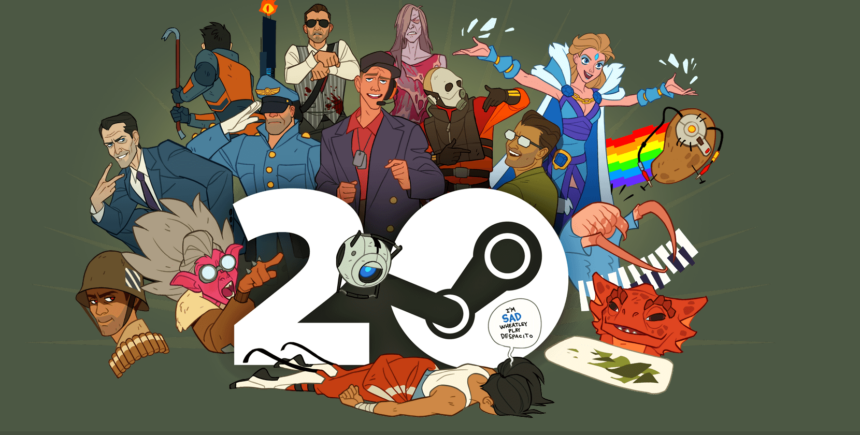Valve has put all of its games on sale today in celebration of Steam’s 20th birthday. The company has also shared a nostalgic trip down memory lane to mark the occasion. However, if you’re seeking a comprehensive history of Steam itself, you might not find it readily available, possibly because Steam had its share of controversies in its early days.
When it debuted exactly 20 years ago on September 12th, 2003, it appeared that Valve was aiming to replace traditional multiplayer server browsers and physical DVDs. In 2004, the release of Half-Life 2, which required Steam even if you purchased a physical disc, made Steam appear primarily as a form of digital rights management (DRM).
This led many game publishers to question the need to pay Valve when they could develop or purchase their own digital distribution platforms, such as EA’s Origin or Ubisoft’s UPlay, instead. However, Half-Life 2 and its mods proved to be an enormous success that PC gamers couldn’t overlook. Additionally, Valve’s agreements with various publishers swiftly established Steam as the primary platform for PC gaming.

Fast forward two decades, and even the last holdouts are gradually joining in. Companies like EA, Ubisoft, Microsoft, Sony, and their allies have embraced Steam. Square Enix has fully re-embraced it, and even Blizzard started offering its games on Steam earlier this year. In contrast, Epic has given away millions of dollars’ worth of free games to promote its Epic Games Store, but it continues to face challenges in competing with Steam’s established dominance.
Nowadays, Steam has evolved from being seen primarily as DRM to becoming a go-to platform for purchasing and enjoying games. With its regular sales and ongoing feature improvements, it has organically become my primary choice for PC gaming, despite my original intentions.








